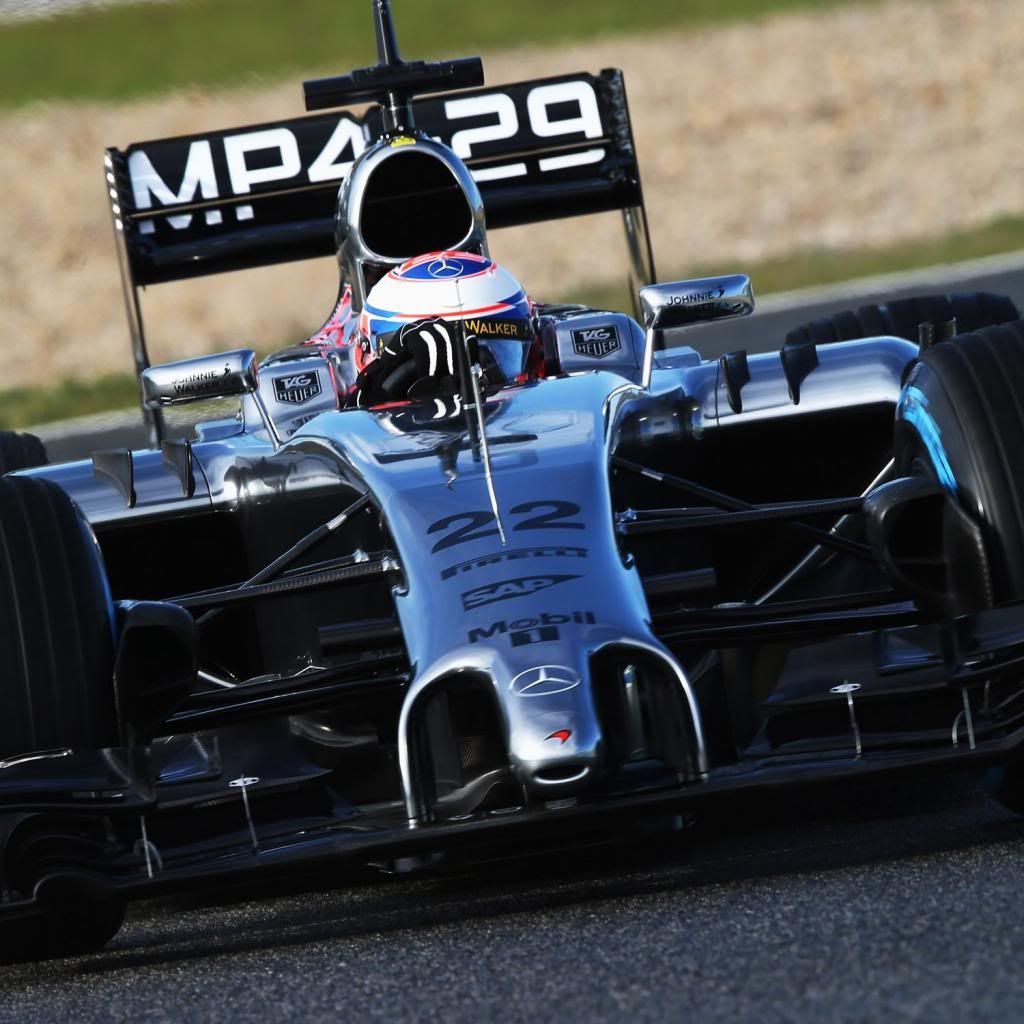- Login or Register
No account yet? Sign up


I beg to differ.BreezyRacer wrote:Will you guys let up on the "ride height system" thing? This is just getting crazy.
You know we've had F1 cars for decades now producing 3-4kg of DF and controlling ride height was never an issue. Now you add 300 lbs of fuel and everything changes? Think about it ..
I think you could be onto something. I am not going to pretend to understand all of what you are saying, but certainly would explain why Red Bull have employed body guards to guard the rear end of their F1 car on the grid... would also explain the fact that the car sits very high on the grid... however I did read somewhere that the Red Bull was using some kinda frozen Wax to achieve the "ride height difference", but for Macca to start development on a ride height system and be within a race of implementing it just goes to show how little the other teams seem to know about this mystery speed they have.shamikaze wrote:Yes, since under high DF, the car will lower due to suspension setup. This is unrelated to bleeding of dampers. This also would make the car have a higher ground-clearance at low-speeds or at standstil (ie parc-fermé), which triggered the whole "ride-height" discussion in the beginnning. Obviously FIA checks the minimal required heights of ground-clearance. Do they also report back when this seems "higher-then-usual". I would expect the RB6 to have a "higher then usual" ground-clearance when empty and the minimal required during "full-load". Also a pull-rod suspension would be more usefull to achieve this compared to the typically in F1 used "push-rod". Again another good reason to guard the back of the car since the devil would be in the detail of this pull-rod suspension.jason.parker.86 wrote: Would this explain why the other teams thought the car had a ride height system?
If they would combine this with the flexing of the rear-wing and possibly allow part of the diffuser to flex with the rear-wing (rear-wing attached to the diffuser and diffuser is mounted where it starts), through specific tubing/forming of your carbon-frame, you could perfectly tune where and how-much (ie under what load) the complete setup would flex. Obviously, they can't flex the sharkfin along with it because that is connected to the engine-cover which would explain what we see in the said video in the RB6 thread. This would be neigh-impossible to detect under static-loads and only visible if you would trail the car very closely at different speeds keeping a very very close eye to the ground-clearance between diffuser and ground and check for any differences.
This is what I think would make their version of the F-Duct/blown-wing very difficult to achieve. For that to work you must have a rear-wing that stays exactly in place at high speed so the precise aerodynamcs involved with F-ducts/blow-wing can work their magic. I for one am very curious to find out how Neway will implement that.
Any of the more educated forum-members to shoot holes in this theory (or confirm it if you will)? As long as not confirmed, I consider this purely academic, but highly plausible

What is the maximum lateral G an f1 car can produce? 4.5 (5)? I guess if you had a rough idea of the coefficient of friction of the tyres you can sorta work out a rough Down-force.I beg to differ.
I have ready somewhere that the downforce to weight ratio can reach 3:1 at the highest speeds. So if the cars weigh in at 1300 lbs, they can produce up to 3900 lbs of downforce, not quite 3-4 tons but an impressive sum none the less. Downforce would be additive to the cars weight so the loading on the suspension would be 5200 lbs (1300 lbs in car weight + 3900lbs in downforce). If we assume that the fuel load weighs 300 lbs that brings our total up to 5500 lbs, with our fuel load equaling about 5.5% of that total load.
While 5.5% isn't huge, it's not immaterial when we consider the margins teams are working with.
You keep repeating this, but I see no evidence that it isn't. 'Leaking' is still a problem that will require tuning out and teams might no be aware that it is happening and McLaren look as if they have a few levels to what they are doing.ringo wrote:There is no compromise.
Ferrari's system needs much more development.Ferrari's system was completely different.
I'm yet to hear them say otherwise.I am yet to hear Mclaren say the system is a compromise.
Given that teams, and especially McLaren, are designing different rear wings to what they would otherwise have with the assumption this system will be in place than I don't see it. Flexible wings yes, but not a system like this. When you disrupt airflow like this there is and it's yin and yang there is always crossover.When the thing is off, it's like any other F1 car without an f duct.
Red Bull already have the downforce and cornering speed they feel they need so it's sensible for them to play about in the one area where they are short. However, the payback for straight line speed in terms of lap time is pretty small over the course of a season in reality. What they're looking at is a handful of specific circuits like Monza where you can gain an advantage this season. This is going to need some further development and Red Bull might not even run it this weekend.It will be a net gain for redbull too, and this is why they are using it in turkey.